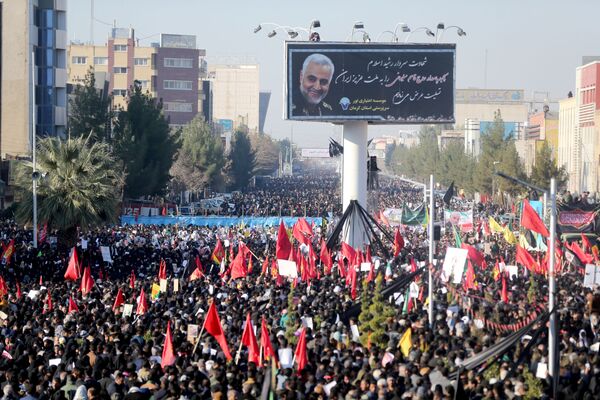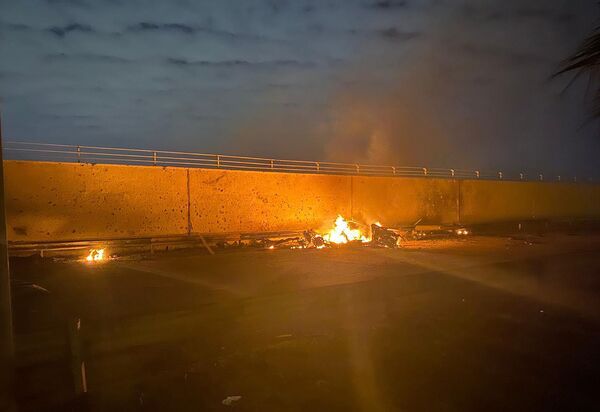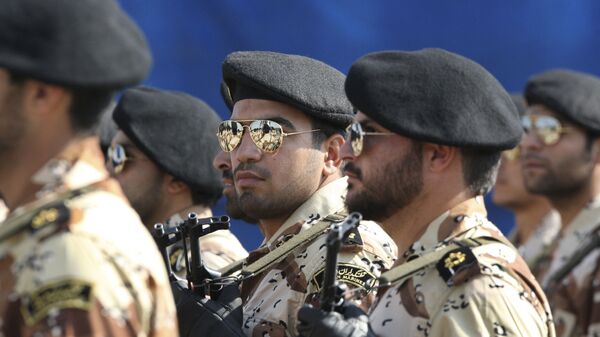Iran has a baker’s dozen potential “revenge scenarios” that it is considering against the US, Ali Shamkhani, secretary of Iran’s powerful Supreme National Security Council, said Tuesday.
“The Americans should know that until now, 13 revenge scenarios have been discussed in the Council and even if there is a consensus on the weakest scenario, carrying it out can be a historic nightmare for the Americans,” Iran's Fars News Agency cited Shamkhani as saying, according to Reuters.
The top Iranian security official did not give details on what these responses might be. Earlier, speaking to a Syrian official in Tehran, he hinted that Iran would “certainly give a military response but it will not solely remain limited to military measures,” and added that America would ‘soon understand’ that killing Soleimani made things more dangerous for them than when he was alive.
Shamkhani also praised the Iraqi parliament’s motion to boot US troops out of the country, saying the resolution was a “hard slap in the face of Trump and his team of criminals.” According to the official, once the Iraqi resolution steps into force, the continued US presence in Iraq will be “tantamount to occupation”.
'Harsh Vengeance Awaits'
Iranian officials have warned that the 3 January drone strike attack on the Quds Force commander in Baghdad would not go unanswered. Iranian Supreme Leader Ali Khamenei has warned that “harsh vengeance awaits the criminals” that killed Soleimani.
Earlier, Iranian Revolutionary Guard Corps Commander Gholamali Abuhamzeh said that 35 US targets in the region, as well as Washington’s Israeli allies, were “within the reach” of Iran’s missiles on the event of conflict. Meanwhile, Esmail Qaani, the officer succeeding Soleimani as commander of the Quds Force, vowed that Quds' mission is “to remove America from the region.”
Over the weekend, Kata’ib Hezbollah, a Baghdad-allied militia whose leader was also targeted in the 3 January strike, warned Iraqi security forces to keep their distance from US bases starting on Sunday.
Responding to the Iranian threats of retaliation, President Trump has suggested that the US might target “52 Iranian sites,” including the country’s major cultural sites, if attacks against “any Americans or American assets” were to take place. Iranian Foreign Minister Mohammad Javad Zarif described Trump’s threats a call to carry out war crimes, and compared him to a “barbarian” of ancient times.
On Tuesday, Iran’s parliament passed a resolution to label the entire US military a terrorist organisation.

Two Weeks of Escalation
Soleimani, 62, was killed early Friday morning after the vehicle he and a senior Iraqi Shia militia leader were riding in was struck by a missile launched by a US Reaper Drone at the Baghdad International Airport. Soleimani’s assassination was the culmination of a series of incidents going back to December 27, when a US military base in Kirkuk, Iraq was hit by rocket fire, killing a US civilian contractor and injuring several US troops. No group has claimed responsibility for that attack, but the US blamed Kata’ib Hezbollah and Iran. The US responded by attacking five Kata’ib Hezbollah facilities across Iraq and Syria, killing 25 fighters and injuring dozens more. On New Year’s Eve, angry protesters attempted to storm the US Embassy in Baghdad. The Pentagon then warned that it would carry out further preemptive “defensive strikes” against forces targeting US interests. After Soleimani’s death, US President Trump and the State Department accused the Quds Force commander of harbouring “imminent” plans to attack Americans. Soleimani’s Quds Force was involved in multiple anti-terrorist operations in the region, targeting al-Qaeda* in Afghanistan and Syria, and participating in Syrian and Iraqi operations to defeat Daesh (ISIS).*

* Terrorist groups outlawed in Russia and many other countries.




